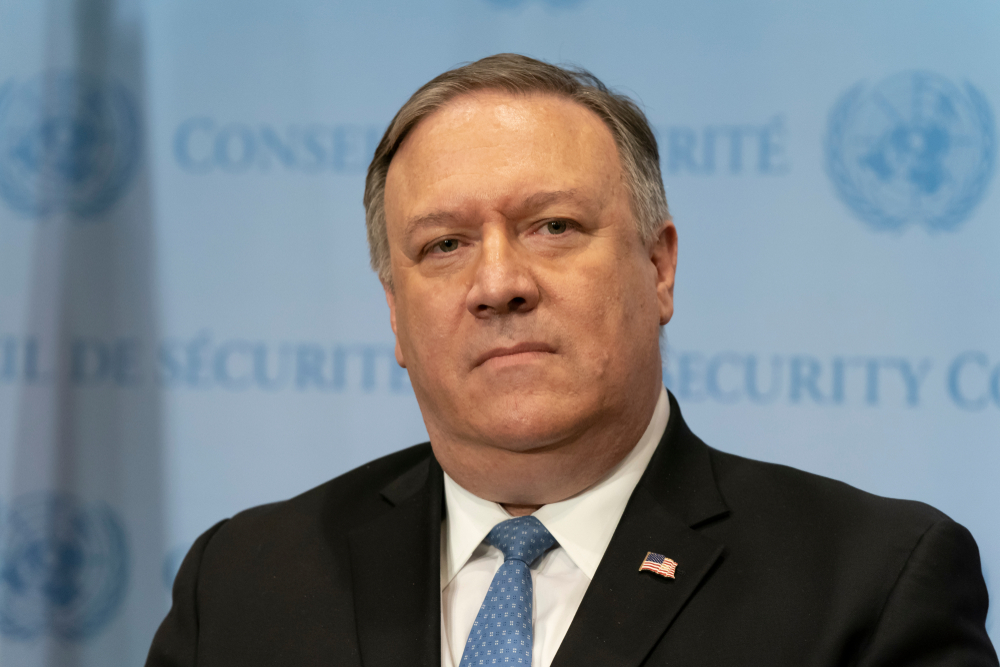by Shireen T. Hunter
Sautrday’s apparent drone attacks against Saudi Arabia’s oil installation at Abqaiq and its oil field at Khurais—both located in the kingdom’s predominantly Shia Eastern Province—have once more raised the political temperatures in the Persian Gulf. Reportedly, as a consequence of these attacks Saudi Arabia’s oil production has been reduced by over fifty percent. A Houthi spokesman claimed responsibility for the attacks, justifying them as retaliation for Saudi Arabia’s invasion of Yemen and its unrelenting bombing campaign there.
Others, however—most notably the United States—pointed the finger at Iran, implying either that the Houthis were acting on instructions from Tehran or that the strike originated elsewhere. Secretary of State Mike Pompeo held Iran responsible and Senator Lindsey Graham said that the U.S. should bomb Iran’s refineries as retaliation for these attacks. According to press reports, some even tried to implicate Iraq in the attacks. According to these reports, the rebels used Iraqi territory to attack the Saudi oil facilities. However, the office of Iraq’s prime minister denied these allegations and said that, according to its constitution, Iraq does not permit its territory to be used for attacks on neighboring states. Regardless, the U.S. has focused on Iran as the principal culprit.
Because of the opaque nature of Iran’s ties to the Houthis, it is difficult to ascertain with any accuracy the extent of Iran’s involvement in these attacks. Clearly, the Houthis are not mere instruments of Iran’s regional policy. Moreover, they have their own grievances towards Saudi Arabia, especially since the Saudi military intervened in Yemen in 2015. Nevertheless, it cannot be denied that the Houthis do have ties to Tehran, and they share similar anxieties regarding Saudi Arabia’s regional behavior. Therefore, it is conceivable that these attacks were also sanctioned, if not ordered, by Tehran.
This theory also fits within the framework of Iran’s strategy of gradual escalation of tensions in its standoff with the U.S. First it captured foreign-owned ships in the Persian Gulf, then it gradually increased the level of its uranium enrichment. These actions by Iran were intended to show that the United States and the Gulf Arabs cannot squeeze and starve Iran without paying any price and suffering any pain themselves. The only way Iran can inflict pain on regional actors and on the Industrialized states is through affecting the flow and price of oil. Given Saudi Arabia’s pivotal position within the global oil supply chain, reducing Saudi production and exports would be the best way of demonstrating global oil supplies’ vulnerability to potential Iranian retaliation. Attacks coming from the Houthis rather than from Tehran also offer Iran a measure of deniability and thus make a military retaliation by the US or Saudi Arabia more problematic. In short, these attacks send the message to regional states that while Iran is starved, they cannot expect to remain safe.
An Untenable Stalemate
The attacks also indicate that the current stalemate between Iran and the U.S. cannot continue indefinitely. Despite the brave words of resistance and resilience coming from Tehran, the country is reeling under U.S. sanctions. Not only are Iran’s economy and therefore its people suffering, economic pressures are increasing social and political tensions and frictions. It is not clear how much longer Iran can function under the weight of sanctions.
However, it is highly unlikely that Tehran will surrender under pressure. The hardliners in Tehran feel that what they see as surrender to U.S. pressure will undermine their position more seriously than the problems created by sanctions. Furthermore, even moderate forces feel that there is no guarantee that, if Iran surrendered, the U.S. would stop pressuring it.
Under these conditions, Iran feels that the only way to end the stalemate is to increase the stakes for the U.S. and its regional allies in the continuation and escalation of the current crisis, by demonstrating that they will not remain immune to its consequences.
What Is to Be Done?
As a rule, stalemates end either when they escalate into a hot conflict or through some form of compromise and accommodation. Clearly, a war with Iran would be a costly affair and one in which the U.S. is reluctant to engage, although some of its regional allies would love it. A war with Iran will certainly entangle Iraq, as well, even if Baghdad did not want to be entangled. Even if the U.S. prevailed, managing post-war conditions in Iran would be even more difficult than has been the case in Afghanistan and Iraq.
The other option is to ease pressure on Iran and thus prepare the way for some form of compromise with Tehran on regional and other issues, especially in the Persian Gulf. By now, Washington must have realized the limits of Riyadh’s power and influence. Saudi Arabia has not been able to deliver the Palestinians or to establish its control over the Gulf Cooperation Council. Qatar has resisted Saudi pressures, and even its relations with the UAE are experiencing some chill over competition in Yemen. Most important, Riyadh—despite its superior firepower and Western support—has not been able to subdue Yemen and has become bogged down in a cruel war with no end in sight. In other theaters, like Syria, U.S. policies have not also yielded the desired results and have only further complicated an already complex situation.
In short, the time has come for the U.S. to consider diplomacy and compromise instead of pressure and the threat of military action as a way to extricate itself and its regional allies from difficult conditions and in the meanwhile, to secure its own strategic interests. Should these efforts fail, the military option is always there.






It’s an undeniable fact to know that almost 1 million Shiites are living on the Eastern front of Saudi Arabia. Many of these Shiites are laboring at the Aramco petroleum facilities under a very harsh living conditions!